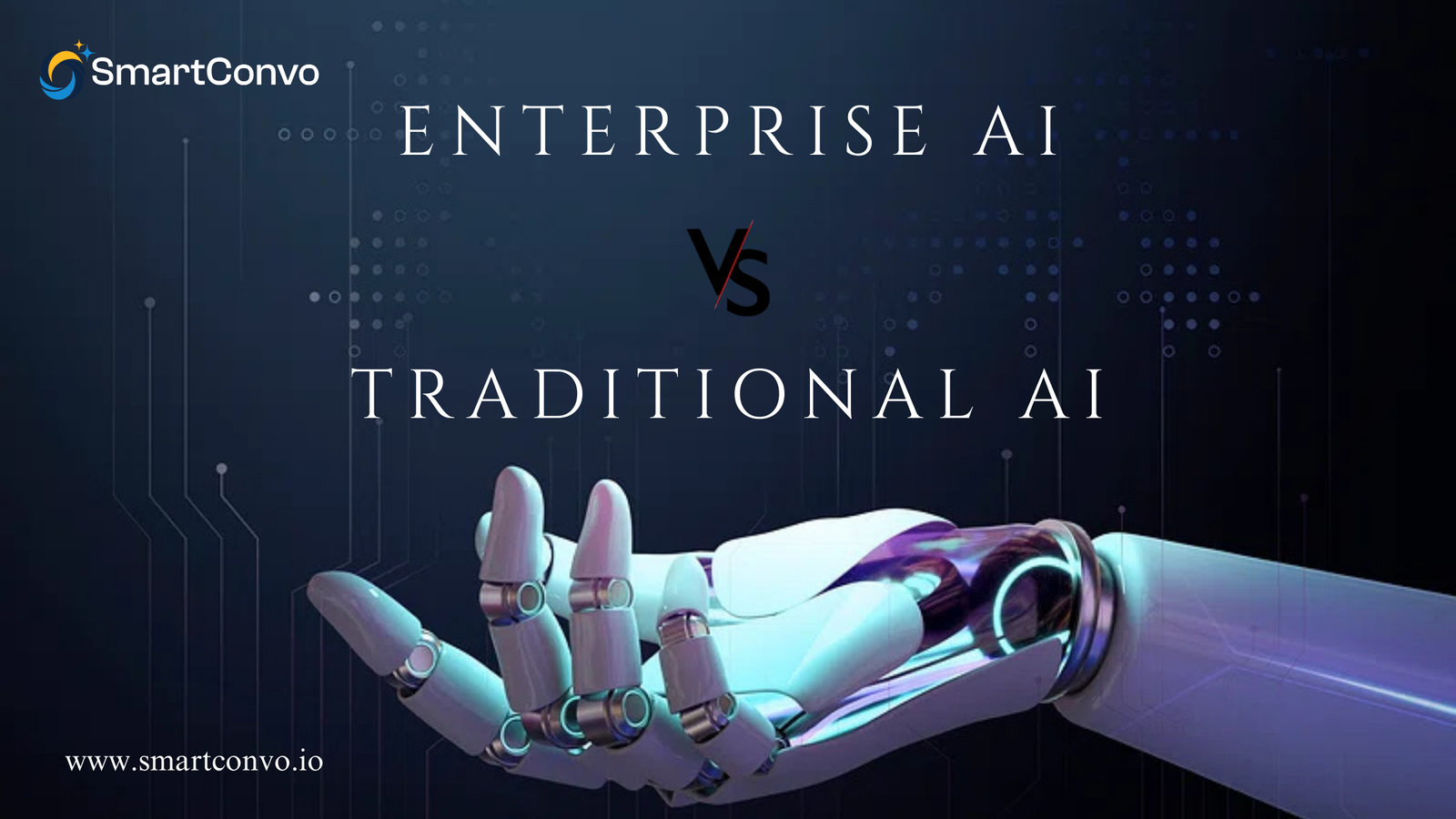In the fast-evolving world of artificial intelligence (AI), businesses are increasingly turning to advanced technologies to stay competitive. However, when it comes to AI, not all solutions are created equal. Two key terms often come up in business discussions: Enterprise AI and Traditional AI. While both harness the power of AI to solve complex problems, they are designed with different objectives, capabilities, and use cases in mind.
Understanding the key differences between Enterprise AI and Traditional AI can help organizations make informed decisions about which technology to adopt. Let’s dive into what sets these two types of AI apart.
What is Enterprise AI?
On the other hand, Enterprise AI is a more comprehensive and scalable solution designed to meet the complex demands of large organizations. Unlike Traditional AI, which may only address a specific issue, Enterprise AI integrates deeply into an enterprise’s core operations, processes, and systems.
An enterprise knowledge platform is a prime example of how Enterprise AI functions. These platforms enable businesses to organize, analyze, and leverage their internal data to drive smarter decision-making across departments. Powered by AI, these platforms can help businesses make sense of vast amounts of structured and unstructured data, providing actionable insights that support strategic planning.
Moreover, enterprise conversational AI plays a crucial role in automating customer support and internal communications, further streamlining business processes. By incorporating advanced AI technologies, businesses can create more personalized experiences for both employees and customers, driving engagement and efficiency.
What is Traditional AI?
Traditional AI refers to artificial intelligence systems built to solve specific, well-defined problems. It is designed to simulate human intelligence and perform tasks like pattern recognition, decision-making, and natural language processing (NLP). Traditional AI solutions are often used in applications such as image recognition, recommendation engines, and virtual assistants.
These systems usually operate in isolated environments, with limited capability to integrate into larger organizational workflows. Traditional AI may excel in solving a single problem but lacks the flexibility and scalability to address the broader, more dynamic needs of large enterprises.
Key Differences Between Enterprise AI and Traditional AI
- Scope and Scale
Traditional AI typically focuses on narrow, well-defined tasks, while Enterprise AI is designed to handle a wide range of activities across an organization. Enterprise AI solutions scale to meet the demands of large businesses and integrate seamlessly with other enterprise systems, including ERP (Enterprise Resource Planning) and CRM (Customer Relationship Management) tools. - Integration with Business Processes
One of the standout features of Enterprise AI is its ability to integrate into existing business workflows. Whether it’s using a knowledge graph enterprise for data discovery or leveraging machine learning algorithms to predict customer behavior, Enterprise AI enables businesses to automate complex processes, improve decision-making, and boost operational efficiency. Traditional AI, on the other hand, operates more independently and may require more manual intervention to be useful in business contexts. - Data Handling Capabilities
Enterprises generate vast amounts of data every day. Traditional AI often works with smaller datasets, while Enterprise AI can process large-scale data from multiple sources, including internal databases, cloud storage, and third-party systems. An enterprise knowledge graph helps map and connect data across the organization, enabling users to access relevant information quickly and with minimal effort. - Flexibility and Customization
While Traditional AI systems are designed to perform a specific function (like identifying objects in images or transcribing speech), Enterprise AI systems are adaptable and can be tailored to fit an organization’s unique needs. This flexibility allows businesses to use AI for a variety of applications, from customer service automation to supply chain optimization. - Security and Compliance
For large organizations, data security and regulatory compliance are top priorities. Enterprise AI solutions are built with these requirements in mind, offering robust security features and compliance with industry standards. In contrast, Traditional AI systems may not be designed to handle sensitive data or meet strict compliance standards.
Why Does This Matter for Businesses?
Choosing the right type of AI depends largely on the size and goals of the business. Small and medium-sized enterprises (SMEs) may find that Traditional AI meets their needs without the complexity or cost of an Enterprise AI system. However, for large organizations with diverse operations and a need for scalable, integrated AI solutions, Enterprise AI is often the better choice.
With its ability to integrate into a knowledge enterprise ecosystem, Enterprise AI offers businesses the tools they need to harness data, improve efficiency, and drive innovation. As AI continues to evolve, businesses that leverage the full potential of Enterprise AI will be well-positioned to lead in their respective industries.
Conclusion
In summary, while Traditional AI serves specific, well-defined purposes, Enterprise AI is a more robust solution designed to tackle the broader, more complex challenges faced by large businesses. By integrating AI into their core operations, enterprises can unlock new efficiencies, improve decision-making, and enhance customer experiences. As AI technology continues to advance, the gap between Enterprise AI and Traditional AI will only continue to grow, making it increasingly important for businesses to adopt AI solutions that are tailored to their needs.



